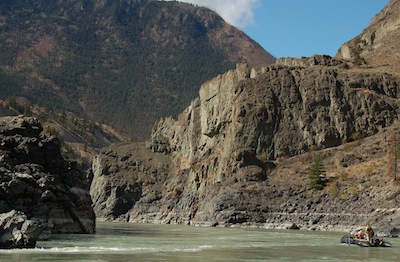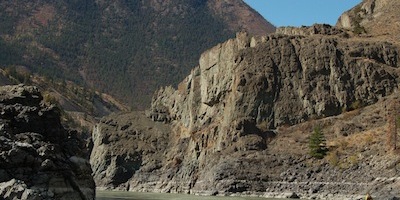
Using a raft-mounted acoustic device (bottom right) that measures water speeds by means of sound waves, researchers have found that parts of the Fraser River flow faster on the bottom than on the top, the opposite of the expected situation. (Photo credit: Jeremy Venditti)
A new study shows water in certain stretches of the 542-kilometre Fraser Canyon in British Columbia is flowing ‘upside-down’, a discovery that helps explain why the canyon walls remain so steep.
Researchers discovered that high velocity water flows down into deep pools and then upwells along the canyon walls, such that the water along the bottom flowing faster than at the top. They employed a raft-mounted acoustic device that used the Doppler effect from sound waves to determine how fast water flows at various points and depths along the Fraser River.
This is the opposite to most rivers, where the water near the bottom is slowed by friction. The fast-moving flow scours the bottom and sides of the canyon rather than depositing sediment as slower-moving water would; this keeps the cliffs sheer.
The hydraulic study helps us understand the critical role of climate-linked processes like erosion in forming mountain ranges, which in turn affect the climate and soil conditions for those living near them.
Original research paper published in the journal Nature on September 24, 2014.
Names and affiliations of selected authors

